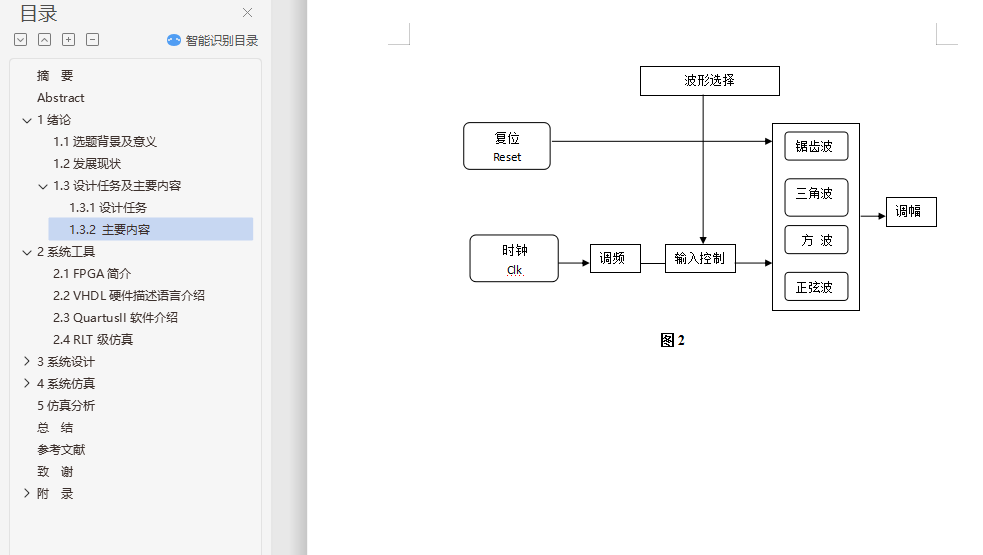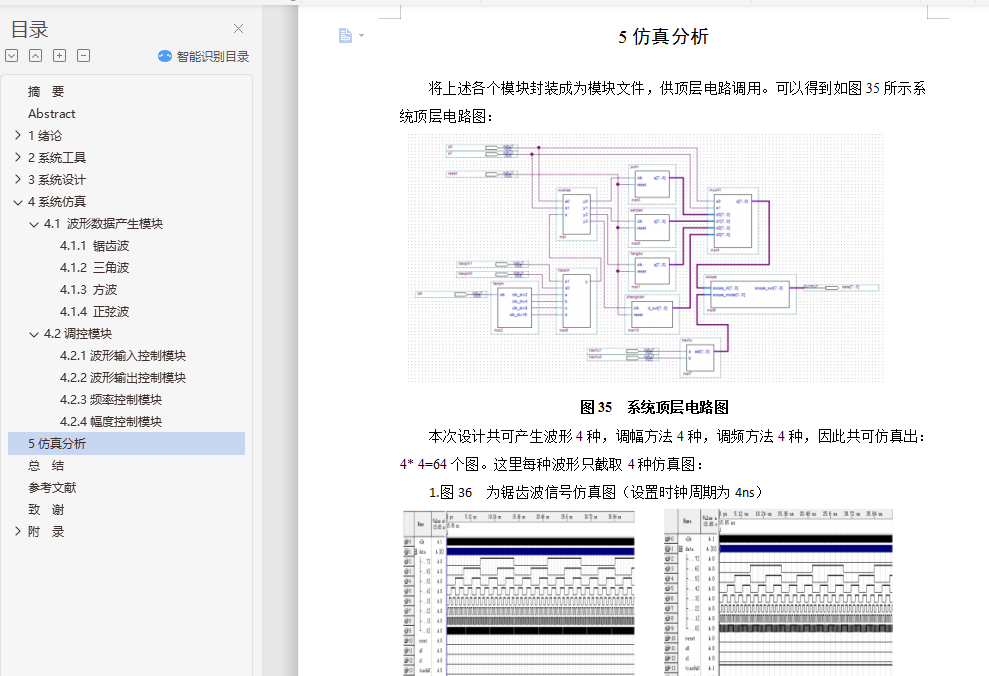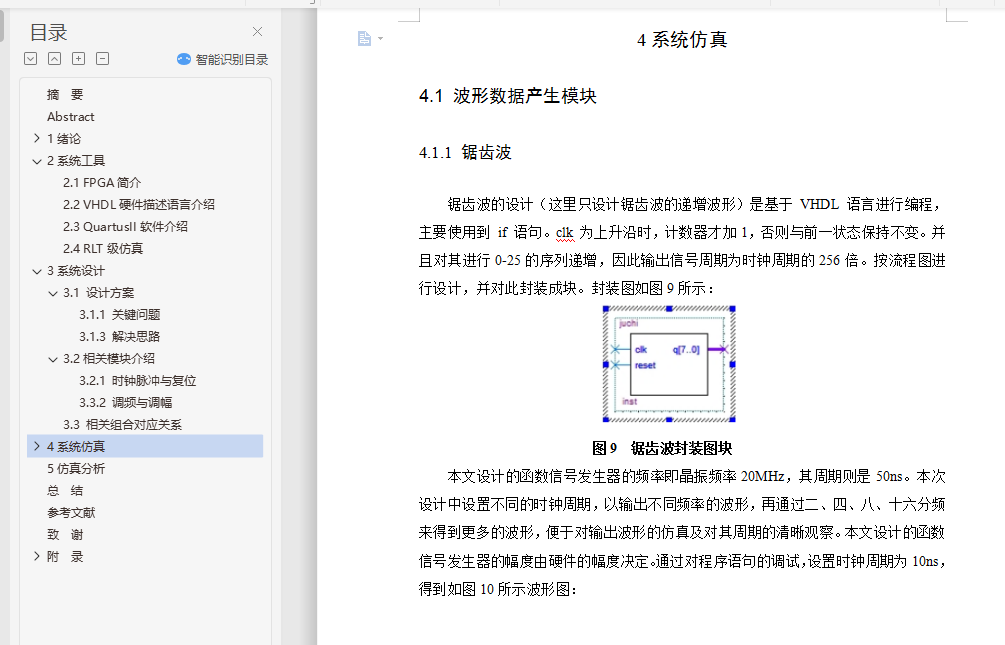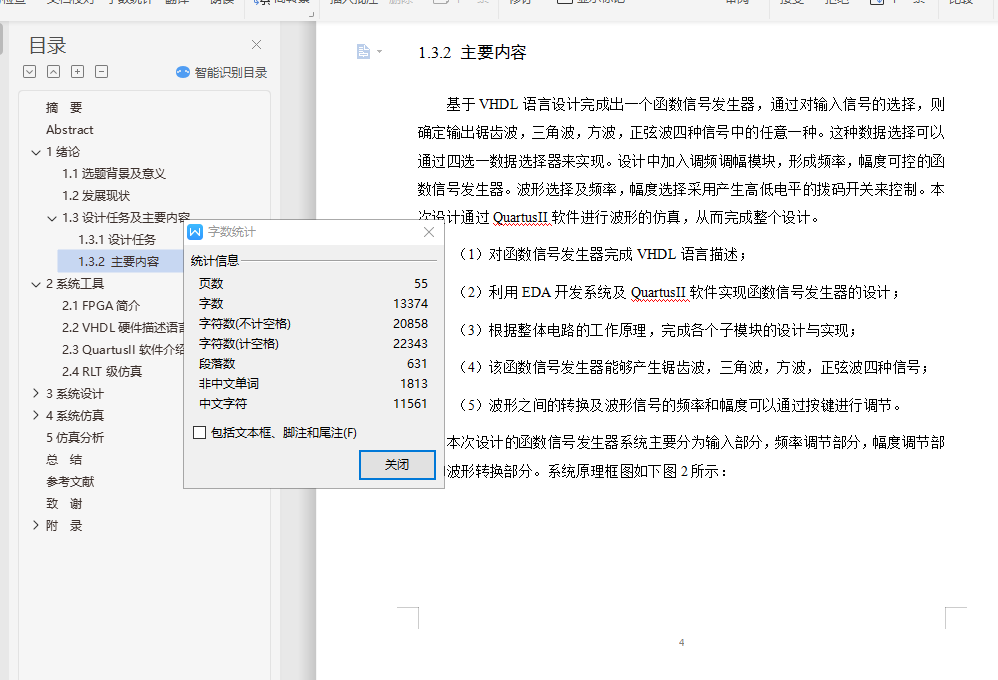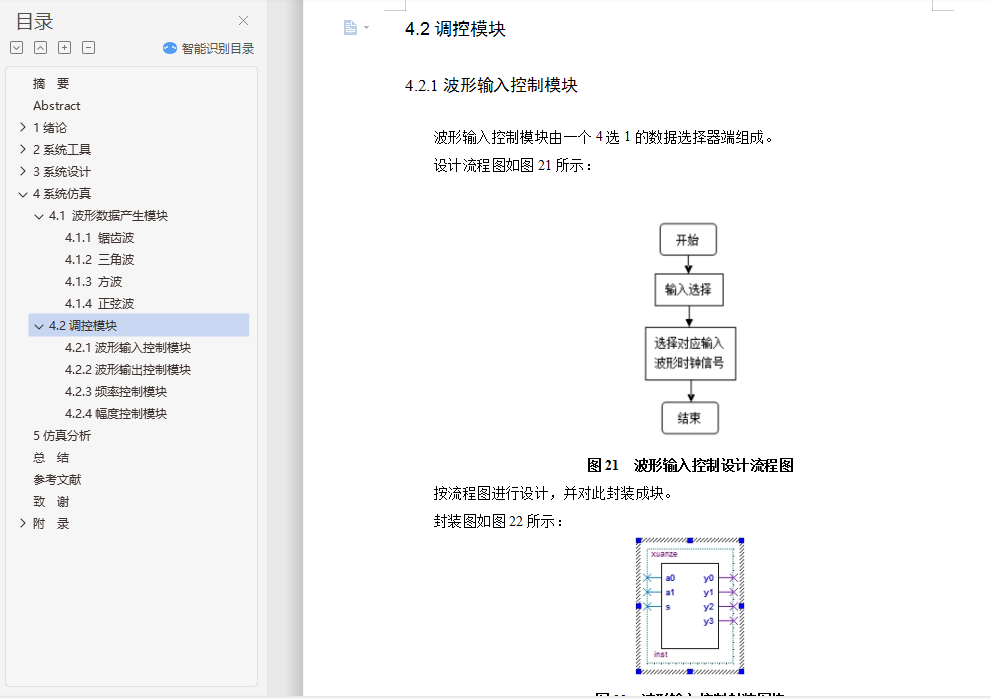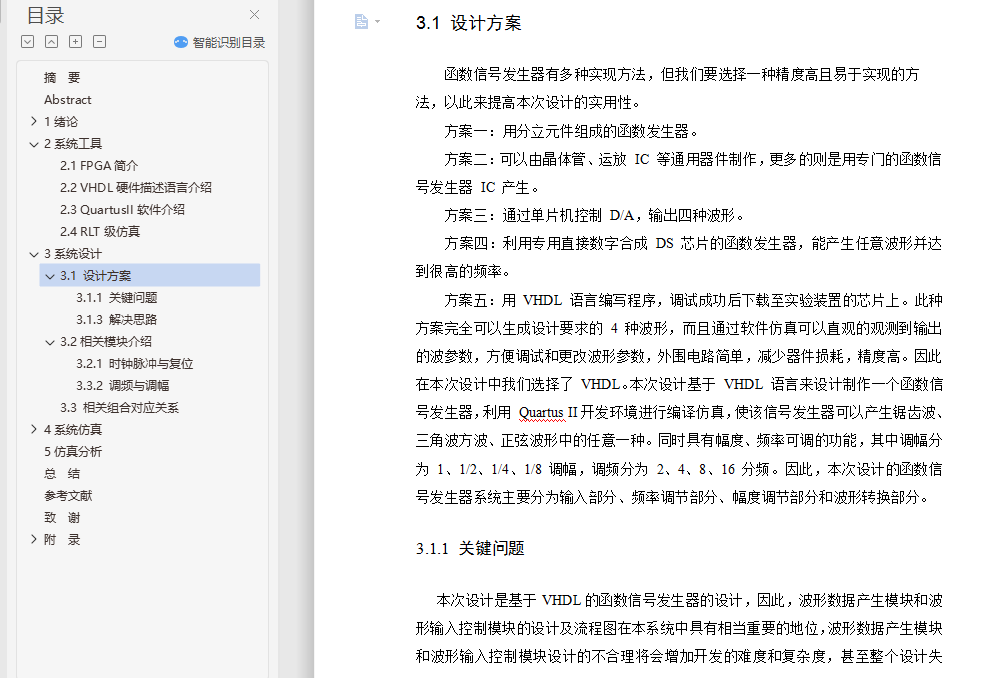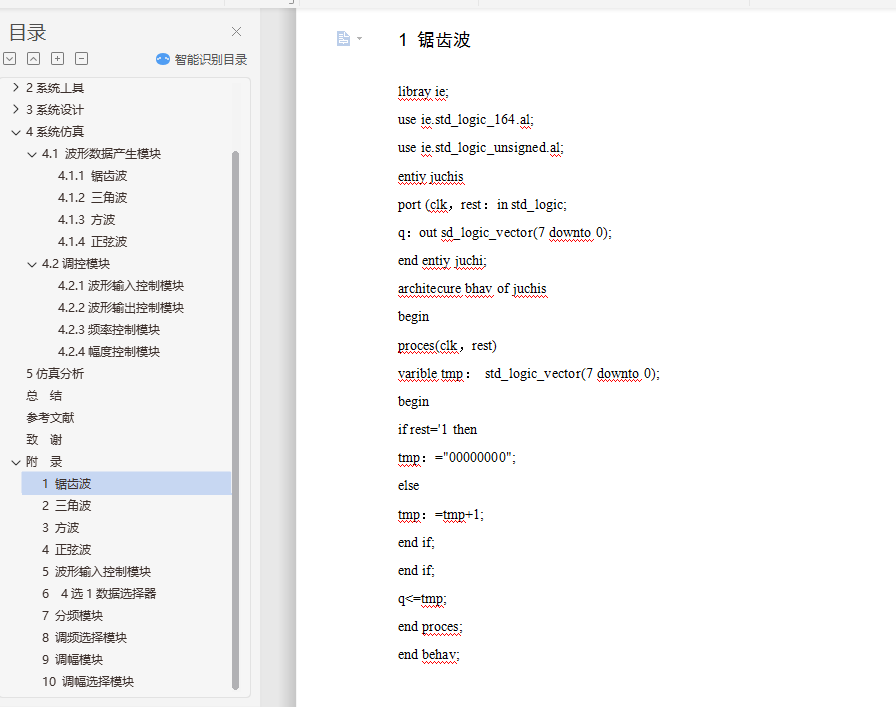摘 要
信号发生器在工业测试领域有这非常广泛的应用,传统的信号发生器存在频率不高,稳定性较差等问题。在生产实践和科技领域中,信号发生器有着广泛的应用,可以产生三角波、锯齿波、矩形波、正弦波等波形。在现代的电子测量中,我们之所以不会选用传统的信号发生器,是因为它们获得所需频率主要依靠谐振法。它们具有较宽的频率范围,并且结构简单。这种信号发生器无法生成任意波形,其频率稳定性和准确度差。
一种基于FPGA的正弦波信号发生器,它具有对电路进行控制的FPGA电路;正弦波产生电路,该电路的输入端接FPGA电路的输出端;通信电路,该电路与FPGA电路相连,该装置设计合理、电路简单、集成度高、外围元件少、能产生稳定信号,可应用于实验室正弦波信号发生装置。本文使用FPGA实现了产生可控频率的正弦波方波的信号发生器,输出正弦、三角、锯齿等。
关键词:信号;发生器;FPGA;正弦;三角;锯齿
Abstract
The signal generator is widely used in the field of industrial testing,and the traditional signal generator has the problems of low frequency and poor stability. In the field of production practice and science and technology,signal generator has a wide range of applications,which can produce triangular wave,sawtooth wave,rectangular wave,sine wave and other waveforms. In modern electronic measurements,the reason why we do not choose traditional signal generators is that they obtain the required frequency mainly depends on the resonant method. they have a wide frequency range and are simple in structure. This signal generator can not generate any waveform,and its frequency stability and accuracy are poor.
A FPGA - based positive The sine wave signal generator,which has the FPGA circuit to control the circuit;the sine wave generation circuit,the input end of which is connected to the output end of the FPGA circuit;the communication circuit,which is connected with the FPGA circuit,the device is reasonably designed,simple circuit,high integration,few peripheral components,can produce stable signal,can be applied to the laboratory sine wave signal generation device. By using FPGA,this paper realizes the signal generator of sine wave square wave which produces controllable frequency,and outputs sine,triangle,sawtooth and so on.
Keywords:Signal;Generator;FPGA;Sine;Triangle;Sawtooth
目 录
摘 要 I
Abstract II
1绪论 1
1.1选题背景及意义 1
1.2发展现状 2
1.3设计任务及主要内容 3
1.3.1设计任务 3
1.3.2 主要内容 4
2系统工具 6
2.1 FPGA简介 6
2.2 VHDL硬件描述语言介绍 8
2.3 QuartusII软件介绍 10
2.4 RLT级仿真 12
3系统设计 14
3.1 设计方案 14
3.1.1 关键问题 14
3.1.3 解决思路 15
3.2相关模块介绍 16
3.2.1 时钟脉冲与复位 16
3.3.2 调频与调幅 16
3.3 相关组合对应关系 16
4系统仿真 18
4.1 波形数据产生模块 18
4.1.1 锯齿波 18
4.1.2 三角波 19
4.1.3 方波 21
4.1.4 正弦波 23
4.2调控模块 26
4.2.1波形输入控制模块 26
4.2.2波形输出控制模块 27
4.2.3频率控制模块 28
4.2.4幅度控制模块 30
5仿真分析 32
总 结 37
参考文献 38
致 谢 39
附 录 40
1 锯齿波 40
2 三角波 41
3 方波 42
4 正弦波 43
5 波形输入控制模块 45
6 4选1数据选择器 47
7 分频模块 48
8 调频选择模块 49
9 调幅模块 50
10 调幅选择模块 51
